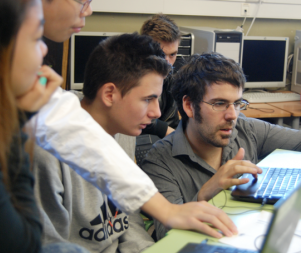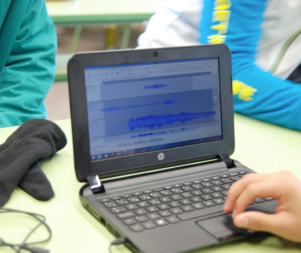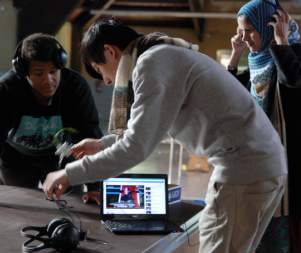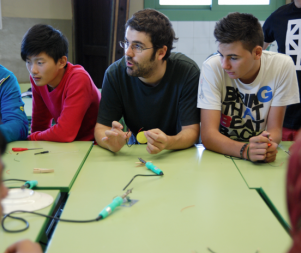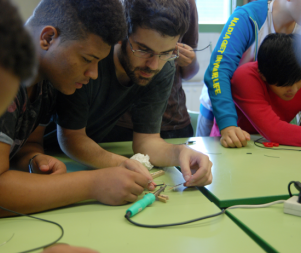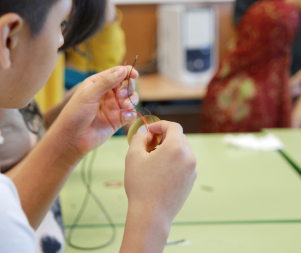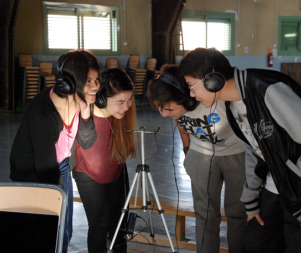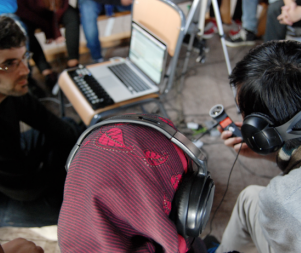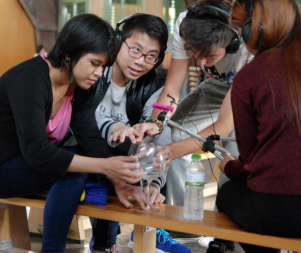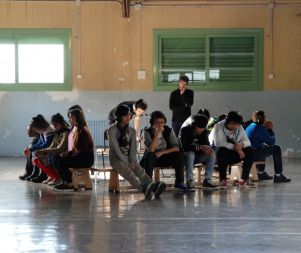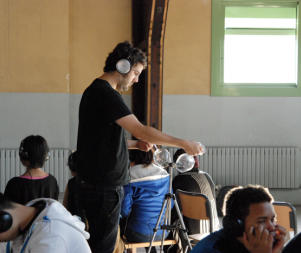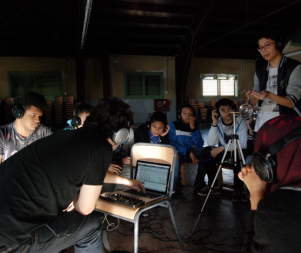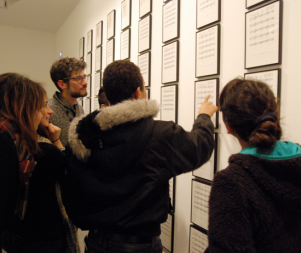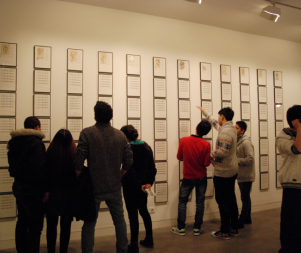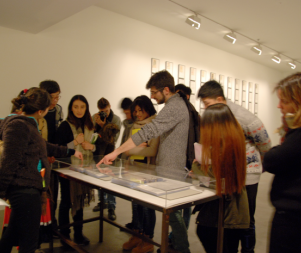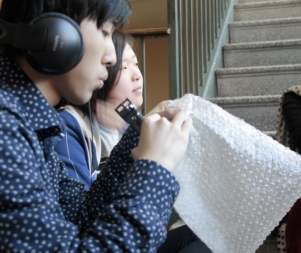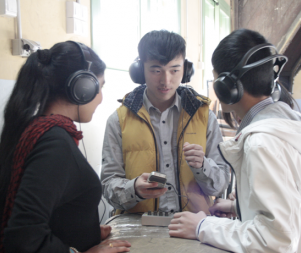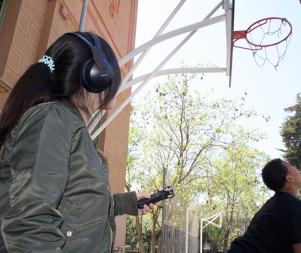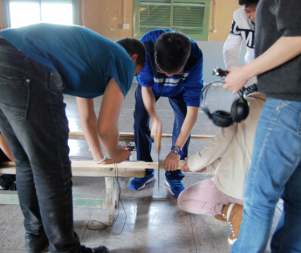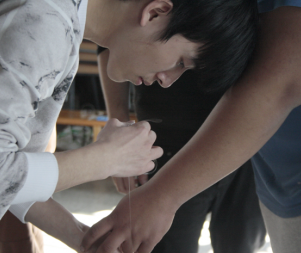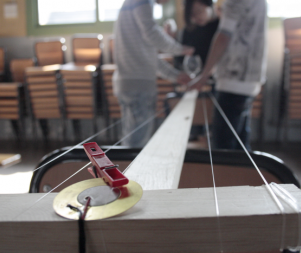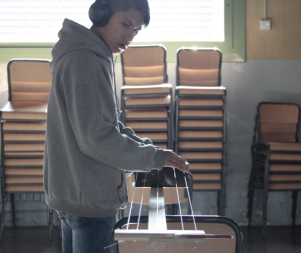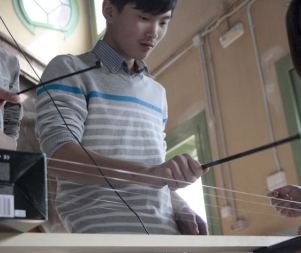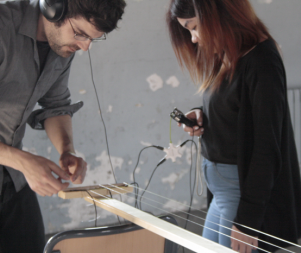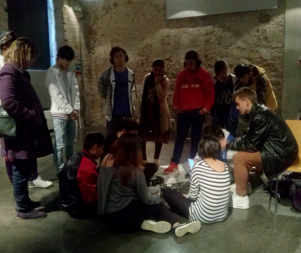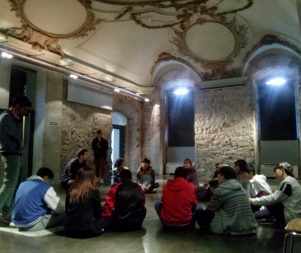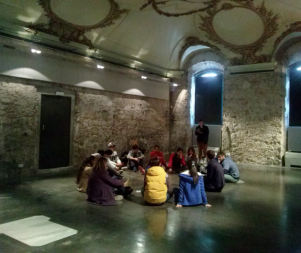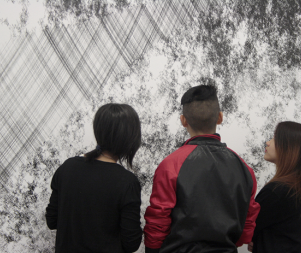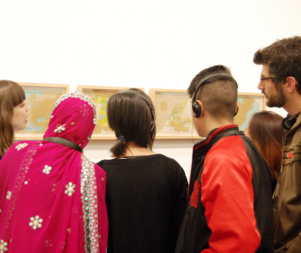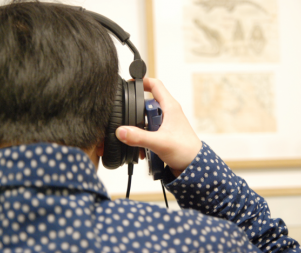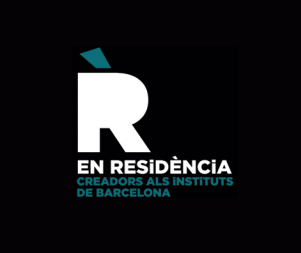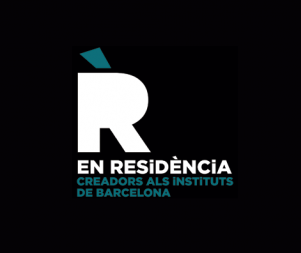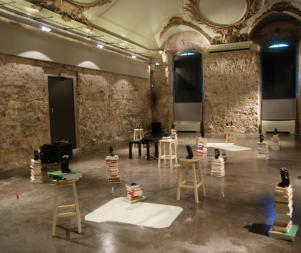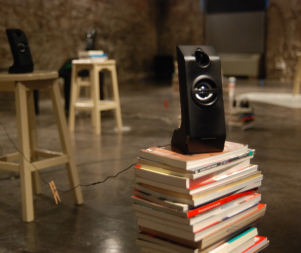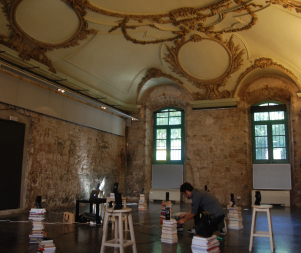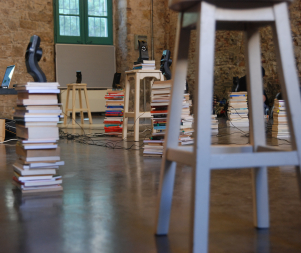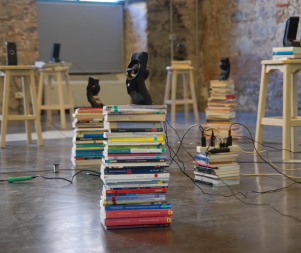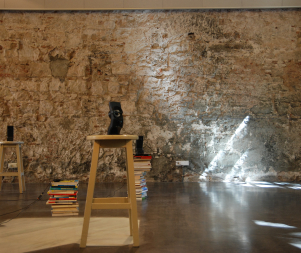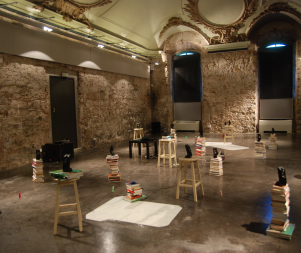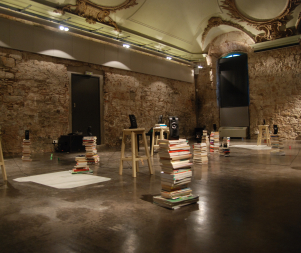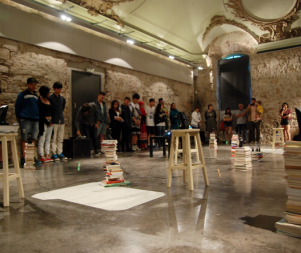- 14th EDITION 2022 / 2023
- 13th EDITION 2021 / 2022
- 12th EDITION 2020 / 2021
- 11th EDITION 2019 / 2020
- 10th EDITION 2018 / 2019
- 9th EDITION 2017 / 2018
- 8th EDITION 2016 / 2017
- 7th EDITION 2015 / 2016
- 6th EDITION 2014 / 2015
- 5th EDITION 2013 / 2014
- 4th EDITION 2012 / 2013
- 3rd EDITION 2011 / 2012
- 2nd EDITION 2010 / 2011
- 1st EDITION 2009 / 2010
Edu Comelles IN RESiDENCE at the School Pau Claris
SOUND ART: DISCOVERING THE FOCUS OF THE ACTIVITY
Edu Comelles suggested working on a sound art project. To begin discovering the field of this work, several introductory sessions took place, focusing both on artists and sound compositions and on describing and listing sounds. Computer programs for working with sound are also introduced, and the pupils learn how to use some basic functions of these.
BUILDING A CONTACT MICROPHONE
So that each pupil has their own equipment to make recordings and experiment with sound, several sessions are devoted to building contact microphones that the pupils will work with throughout the process. In subsequent session, the recordings are made using these microphones.
VISUAL ”SCORES”: INTERPRETATION
A sequence of sounds can be represented visually. We can also use a drawing as a visual “score” for a performance of sounds. From this starting point, the pupils are organised into groups to prepare their performances, which are then recorded. The idea of performing a sound composition gains strength as the possible culmination of the process.
A SESSION OF LISTENING
The exploration of sound and its nuances and expressive potential is one of the main subjects studied during the process. The discovery of "listening" was the focus of one of the sessions: Edu Comelles composed a short piece with two glasses to be listened to with one's eyes closed. Then pupils then experimented for themselves, generating a range of different sounds.
THE ANTONI TÀPIES FOUNDATION
Visit to the exhibition Interval, organised by the Antoni Tàpies Foundation and devoted to sound art. Discovery of sound art works installed in the building, as well as visual scores for sound pieces.
LOOKING FOR SOUNDS
One of the subjects proposed from the start of the residency is the idea of generating a powerful and varied library of sounds that can form the basis of the final work. To this purpose, research is conducted into sounds from different sources (school, street, home, etc.), while a more experimental search also began with the pupils' own bodies and testing different materials. Accordingly, some sessions were devoted to making sounds with the mouth, to saying words in languages known to them, to making sounds with paper, by rubbing objects, striking them, blowing on them and so on.
THE HARPS
To find sounds from different sources for the library, the idea is formed of building some giant harps that will be played by the wind, or by strumming or plucking the string. In groups, the pupils build four harps, each two metres in length, with four strings of varying thicknesses so that each makes different sounds. Several sessions are devoted to playing these harps and recording the sounds they make.
TENSING THE THREAD
The harps provide a new way of experiment with sound. The idea is put forward of experimenting with the tension of a nylon thread that goes all around the gymnasium where the sessions take place. This experiment gives rise to the title of the project, Tensar el fil, “Tensing the Thread”. In the end, in the final work, the group decides against live performance on the harps, but they sounds they produced are present throughout the final sequence.
PREPARING THE INSTALLATION AND FIRST VISIT TO THE CONVENT OF SANT AGUSTÍ
In order to consider possibilities for the installation of the final work, a session takes place in the main hall of the Convent of Sant Agustí. This session inspires the formal organisation of the work and also enables the group to decide how to start the whole piece up. Equipment from the school (books and tambourines) is included in the performance, as is another element from the pupils' sound environment (mobile phones), which will begin the piece.
MACBA AND THE ÀNGELS GALLERY
La visit to Tristan Perich's show Sound it bit at the Àngels gallery provides a chance for the group to discover the work of an artist devoted to exploring code and sound. Next, they visit MACBA, specifically to see the exhibition Hidden Narratives: A Different Visit to the MACBA Collection, on the theme of sound. Once more, the pupils can trace links between visual and sound phenomena.
CONVENT OF SANT AGUSTÍ
One of the most important elements aspects of the residency are the ties established with a cultural centre near the school, the Convent of Sant Agustí. This local centre organises a programme that attaches particularly importance to sound art. The former convent serves, not only as the venue for the presentation, but also provides technical support, and several preparatory sessions are held at the main room there to enable the group to image what the final work will be like and the form that its public presentation should take.
FINAL PRESENTATION
The final presentation of the work takes place in the main room of the Convent of Sant Agustí. A day is devoted to installing all the material involved in the piece, with the pupils taking decisions over the organisation. The assembly of the work, previously designed and rehearsed at the school, entails installing equipment from the school itself (books making towers, the class tambourines and so on), which are arranged around the room to ensure that the loudspeakers are well distributed. The session is also devoted to checking the sound and rehearsing the start of the performance, when the sound of mobile telephones forms a prelude to the work itself in a small, specific action.
At the public presentation, the pupils and Edu Comelles describe the creative process and show the audience the different sound elements included in the installation.

